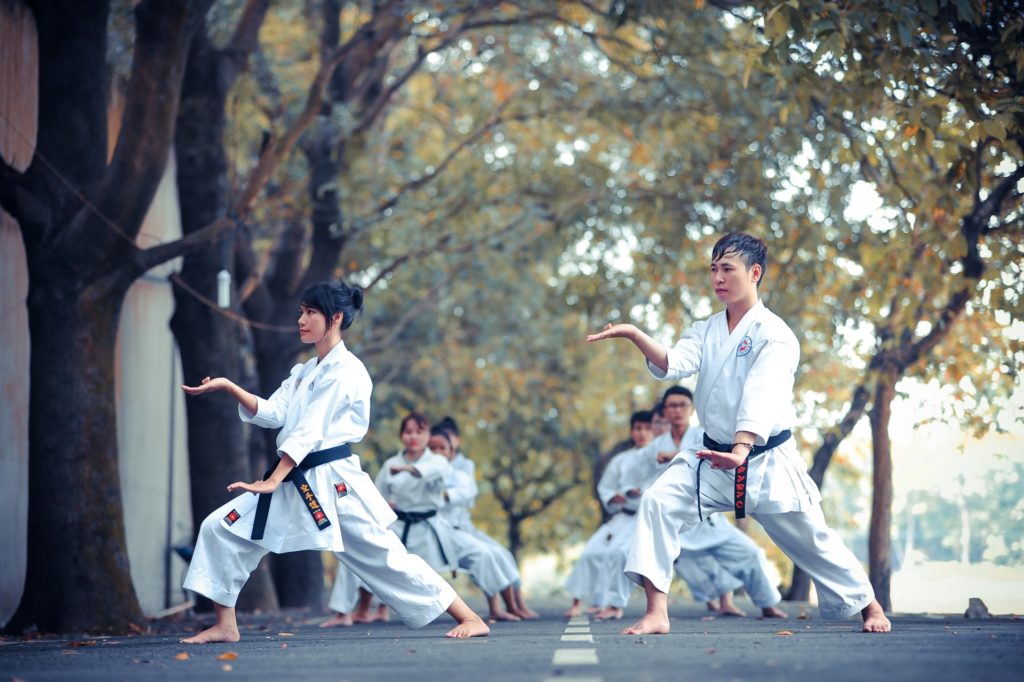Judo: More Than Just Throws and Pins

Judo is a modern martial art and combat sport that originated in Japan in the late 19th century. Developed from jujutsu by Jigoro Kano, judo emphasises throwing techniques and ground grappling while incorporating principles of non-resistance and maximum efficiency. As one of the most widely practised martial arts worldwide, judo offers a full-body workout and develops strength, flexibility, discipline, and self-confidence. This article will provide a brief history of judo, outline key techniques and rules, and discuss the philosophy behind “the gentle way”.
The Origins and History of Judo
Judo was developed in 1882 by Jigoro Kano (1860-1938) at the Kodokan, his martial arts school in Tokyo. Kano studied various styles of jujitsu as a young man, developing a distaste for the injuries and emphasis on smashing and killing blows found in many jujutsu ryu (schools) at the time. Inspired by the non-violent approach of jujutsu master Fukuda Hachinosuke, Kano adapted techniques to create a new martial art focused on throwing, grappling, and non-resistance. He called his art “judo”, meaning “gentle way”, to differentiate it from jujutsu or “hard/stiff way”.
Kano established key principles for judo training such as safe practice via ukemi (breakfall techniques), progression from basic to advanced techniques, and randori (free practice) to test skills against resisting opponents. He also incorporated Confucian ideals of physical, intellectual, and moral development as well as the concept of “maximum efficiency, minimum effort” from traditional jujutsu into judo’s philosophy. Kano’s judo proved incredibly effective, gaining publicity from challenge matches against jiu jitsu practitioners. The Kodokan expanded rapidly, aided by judo being adopted into the Japanese public school curriculum in the early 1900s. As judo spread internationally from the 1920s onward, training methods were refined and competition rules evolved while new techniques continued to be developed.
Table: Key Milestones in Judo History
| Year | Event |
|---|---|
| 1882 | Jigoro Kano founds Kodokan judo school in Tokyo |
| 1886 | Randori (free practice) officially adopted into judo |
| 1895 | Kano becomes first Asian member of IOC |
| 1909 | Kodokan judo is taught in Japanese schools |
| 1964 | Judo debuts as an Olympic sport (men only) |
| 1984 | First women’s world judo championship held |
| 1992 | Women’s judo added to the Olympics |
Key Throwing and Grappling Techniques
Judo training involves practising both standing throws (nage-waza) and ground grappling techniques (ne-waza). There are several major classifications of throwing techniques in judo:
- Hand throws (te-waza): One-arm shoulder throws, sacrifice throws such as seoi-nage.
- Hip throws (koshi-waza): Techniques like ogoshi (major hip throw) using the hip as fulcrum.
- Leg/foot throws (ashi-waza): Sweeping the opponent’s leg, example – de-ashi-barai (forward foot sweep)
- Side sacrifice throws (yoko-sutemi): Thrower falls sidewards, example – yoko-otoshi (side drop)
- Rear throws (sukui-nage): Throw over the shoulder/back, example – ushiro-goshi (rear hip throw)
Once an opponent is taken down, ne-waza (ground techniques) are used to gain dominance and apply submission holds/chokeholds. Common ne-waza techniques include pins (osae-komi-waza like kesa-gatame), chokeholds (shime-waza like juji-jime), joint locks (kansetsu-waza like ude-garami), and immobilizations. Escapes and reversals are also extensively trained.
Rules and Competitions
For safety, judo training and competition follows strict rules and weight divisions. Contests take place on mats and the aim is to throw the opponent onto their back, pin/control them on the ground, or submit them with a choke or armlock. Direct attacks to the face, strikes, and leg grabs are prohibited. Points are awarded for throws and holding an opponent on their back. Contests have a time limit and proceed through tournaments with single elimination.
Judo debuted as an Olympic sport at the 1964 Tokyo Games for men and was later added for women starting in 1992. Major international competitions include the World Judo Championships and World Masters games. Judo is also a popular collegiate sport in Japan and is included in major athletic competitions like the Pan American Games. Ranking systems with coloured belts denoting expertise are used to grade participants from novice to elite levels.
Philosophy and Lifestyle
True to its founder’s ideals, judo is designed to develop more than just physical techniques. Its motto of “maximum efficiency, minimum effort” (seiryoku-zenyo) teaches skilled use of energy and leverage rather than brute strength. Practitioners must learn to yield to momentum and redirect an opponent’s force rather than meet it head-on. This relates to judo’s emphasis on self-improvement, understanding one’s limits, respecting others, and seeking mutual benefit and welfare.
Judo is intended to build character and teach self-control, etiquette, confidence, leadership skills, and social contributions. Kano viewed it as moving meditation and a “do” or “way of life”. Many see judo as embodying key Japanese social values like discipline, modesty, perseverance, and self-mastery. However, as an international sport practised by millions worldwide, judo’s benefits and appeal are universal.
In summary, judo is a uniquely Japanese yet globally popular martial art focused on throwing and grappling techniques. Developed from jujutsu in the late 1800s using principles of non-resistance and efficiency, judo offers a method of physical conditioning, self-defence, competitive sport, and personal development. With its blend of physical rigour, mental discipline, moral philosophy, and dynamic history, judo continues to attract students internationally while retaining its cultural heritage and origins.

